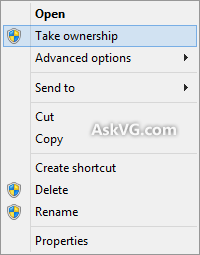Most of us face lower disk space problem in Windows. Many times Windows notifies us about the lower disk space and we are forced to delete some useless files or to resize the partition to get some free space. We are posting this tutorial to share some simple methods to get as mush FREE space as we can. Following are some ways to get free space in Windows:
1. First thing is to use windows built-in "
Disk Cleanup" application. You can right-click on a drive in My Computer and select "
Properties" now click on "
Disk Cleanup" button. Now select all given options, like "Downloaded Program Files", "Temporary Internet Files", "Compress old files", etc. Sometimes you can get more than 1GB FREE space after using Disk Cleanup.
Alternatively you can run "Disk Cleanup" directly from RUN dialog box by giving "
cleanmgr.exe" command.
2. Now open Windows Search and copy paste following code in Search box and perform a search:
*.tmp;*.log;*log.txt;*readme.txt;file_id.diz;*.bak;*.old;*.syd;*.prv;*.grp;*.gid;*.fts;*.cnt;*.~mp
You should check all files before deleting. You'll get 100's of files after searching, simply select all and press and delete them.
PS: Please check the files before deletion! It'll delete all Readme files, Backup files, Log files, etc. So deselect the files first, which you don't want to delete.
3. You can also disable WFP (Windows File Protection) service in Windows XP using
WFP Switcher. This service runs in background and checks for system files status, and whenever it finds a system file has been changed/modified, it replaces the file with the original file stored in "
DLLcache" folder. So we can disable this service and can get lots of FREE space.
After disabling the service, open "
%windir%\System32\DLLCache" folder (it'll be HIDDEN & System Folder, so copy paste the path in address bar and press <ENTER>). Now you can safely delete all files present in this folder. It'll make aprrox. 1GB FREE space.
4. Open "
System Properties" by right-click on "
My Computer" icon on Desktop and select "
Properties", now go to "
System Restore" tab and select "
Turn Off System Restore on all drives" option and apply it. Don’t use this trick if you use System Restore.
5. You can also delete several BMP files present in
%windir% (Windows) folder, which are used as wallpapers in Desktop Properties. You can also delete all files in
%windir%\Web\Wallpaper folder, all files in this folder are also used as wallpapers.
6. You can also empty
TEMP (just type "TEMP" and "%TEMP%" one by one in RUN dialog box),
Prefetch (in
%windir% folder) folders to get free space.
7. Disable
Hibernation from "
Power Settings" (
powercfg.cpl), if you don't use this feature.
8. Empty Temporary Internet files of your web browser to get some free space.
9. You can also delete all video files present in
%windir%\system32\oobe\images folder, these files are used when windows runs for the first time after installation.
10. You can also delete all updates Uninstall Folders, which can be found in
%windir% folder and all these folders' names will start from
$NtUninstall (or something like that. Also all folders would be HIDDEN). But keep in mind that after deleting these folders you'll not be able to uninstall any windows update!
You can apply all above mention methods to get lots of FREE space without any problem.
You can also use 3rd party Utilities, like Tuneup Utility, System Mechanic, etc to FREE some space but these utilities also use most of the above mentioned techniques.



























